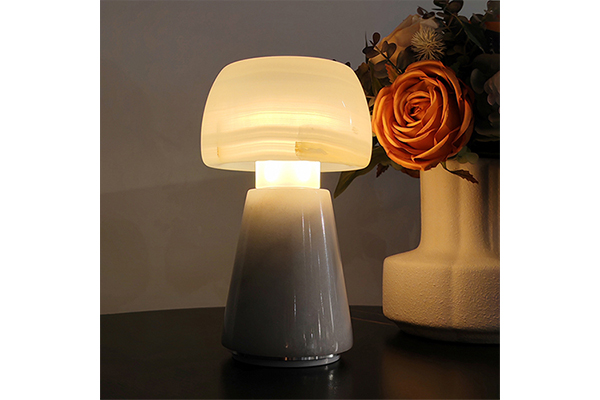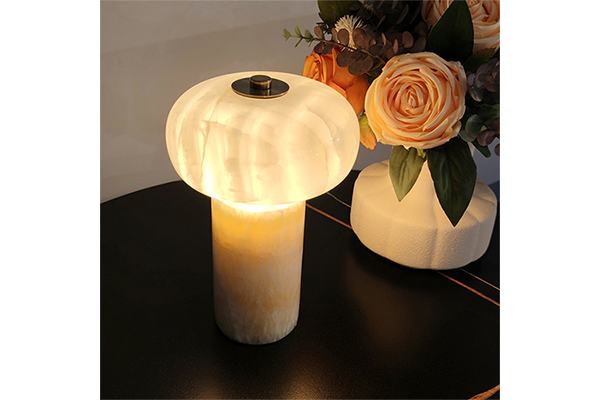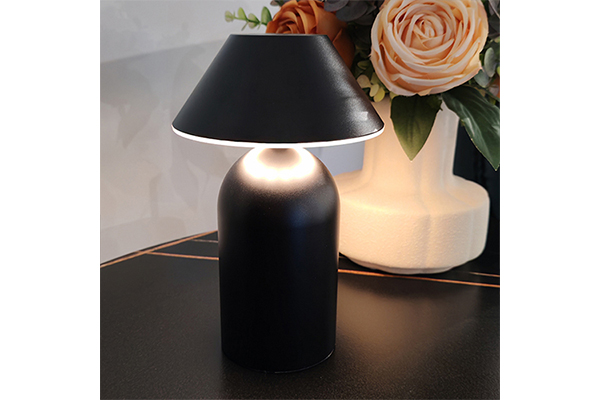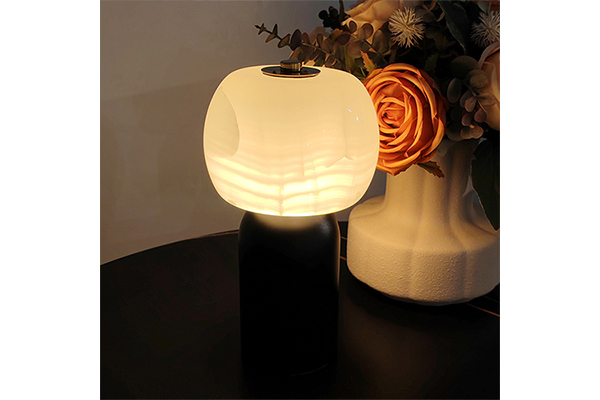How do the lightweight properties of aluminum lamps help hotels achieve bold lighting designs?
Release Time : 2025-09-23
In contemporary hotel design, lighting is no longer simply a functional source of light; it becomes a core design language that shapes the spatial atmosphere, conveys brand identity, and enhances the guest experience. As architectural aesthetics evolve, designers are increasingly pursuing visually striking lighting installations—from artistic chandeliers suspended tens of meters, to giant light grids spanning atriums, to geometric light bodies suspended in the air. However, the realization of these bold ideas is often constrained by structural load-bearing capacity, installation difficulties, and safety regulations. It is within this context that aluminum lamps, with their exceptional lightweight properties, have become a key material in pushing the boundaries of hotel lighting design.
Lightweight and High Strength: Unleashing Structural Constraints to Achieve Aerial Art
Aluminum alloy has a density of only about one-third that of steel, yet possesses exceptional strength and rigidity. This combination of lightness and strength allows aluminum lamps to maintain structural stability while significantly reducing the load on the building's ceiling. For historic hotel renovations or spaces with limited floor support, traditional stone, glass, or cast iron lamps are often excluded due to their weight. Aluminum lamps, however, can easily be installed in the air, freeing designers from compromising structural constraints. For example, suspending a large, sculptural aluminum chandelier in the center of a hotel lobby or creating a floating linear light strip in a high-ceiling space are no longer a dream. This weight reduction not only ensures building safety but also unleashes designers' imagination, transforming overhead lighting from a mere "accompaniment" into a "main character."
Flexible Installation: Adapting to Complex Spaces and Improving Construction Efficiency
Hotel spaces vary in structure, from curved ceilings to sloping roofs, from narrow access corridors to high-rise glass curtain walls, often posing installation challenges for traditional lamps. The lightweight nature of aluminum lamps makes them easier to transport, hoist, and position, significantly reducing construction complexity and labor costs. Especially for high-altitude operations, the lightweight aluminum lamps reduce the load on hoisting equipment, improving construction safety and efficiency. Furthermore, aluminum's ease of fabrication allows for modular designs and rapid on-site assembly. For example, an art installation composed of hundreds of aluminum light strips can be transported in sections and assembled piece by piece, avoiding the significant risks of hoisting the entire structure. This flexibility allows designers to boldly create stunning visual flows by arranging lighting in complex areas like stairwells, atriums, and domes.
Supporting Innovative Forms: From Linear to Curved, Defining Spatial Lighting
Aluminum's exceptional ductility and plasticity allow it to be fashioned into a variety of complex cross-sections and curved surfaces through processes such as extrusion, stamping, and bending. Combined with its lightweight advantages, aluminum lamps can achieve slender, extended, or dynamic forms that are difficult to achieve with traditional materials. In hotel design, this manifests itself in extremely narrow linear lamps that outline the building's contours, flexible aluminum strips that flow along curved walls, or light mesh structures that weave light patterns in the air. These designs not only appear light and transparent, but also create a rich, rhythmic spatial atmosphere through precise light distribution. For example, a modern hotel might use continuous aluminum light strips that wrap around a corridor, creating a guiding "river of light" without the need for heavy lamp bodies to disrupt the pure atmosphere of the space.
Fostering Sustainable and Intelligent Upgrades
Lightweight aluminum lamps are highly aligned with hotels' sustainability goals. Their reduced weight means lower carbon emissions during transportation and reduced energy consumption during installation. The aluminum itself is 100% recyclable. Furthermore, their lightweight design facilitates integration with sensors, dimming modules, and wireless control systems, driving the adoption of smart lighting within hotels. Whether it's guest room lighting that automatically adjusts color temperature based on the time of day or public area lighting that responds to changing foot traffic, aluminum lamps provide an ideal physical platform for intelligent lighting.
The lightweight nature of aluminum lamps is more than a simple physical parameter; it's a design enabler. They break free from the constraints of weight, transforming hotel lighting from simply illuminating a space to sculpting it. In today's pursuit of unique experiences and artistic expression, lightweight aluminum lamps are becoming the most agile brush in designers' hands, creating more imaginative and emotionally charged compositions of light and shadow.
Lightweight and High Strength: Unleashing Structural Constraints to Achieve Aerial Art
Aluminum alloy has a density of only about one-third that of steel, yet possesses exceptional strength and rigidity. This combination of lightness and strength allows aluminum lamps to maintain structural stability while significantly reducing the load on the building's ceiling. For historic hotel renovations or spaces with limited floor support, traditional stone, glass, or cast iron lamps are often excluded due to their weight. Aluminum lamps, however, can easily be installed in the air, freeing designers from compromising structural constraints. For example, suspending a large, sculptural aluminum chandelier in the center of a hotel lobby or creating a floating linear light strip in a high-ceiling space are no longer a dream. This weight reduction not only ensures building safety but also unleashes designers' imagination, transforming overhead lighting from a mere "accompaniment" into a "main character."
Flexible Installation: Adapting to Complex Spaces and Improving Construction Efficiency
Hotel spaces vary in structure, from curved ceilings to sloping roofs, from narrow access corridors to high-rise glass curtain walls, often posing installation challenges for traditional lamps. The lightweight nature of aluminum lamps makes them easier to transport, hoist, and position, significantly reducing construction complexity and labor costs. Especially for high-altitude operations, the lightweight aluminum lamps reduce the load on hoisting equipment, improving construction safety and efficiency. Furthermore, aluminum's ease of fabrication allows for modular designs and rapid on-site assembly. For example, an art installation composed of hundreds of aluminum light strips can be transported in sections and assembled piece by piece, avoiding the significant risks of hoisting the entire structure. This flexibility allows designers to boldly create stunning visual flows by arranging lighting in complex areas like stairwells, atriums, and domes.
Supporting Innovative Forms: From Linear to Curved, Defining Spatial Lighting
Aluminum's exceptional ductility and plasticity allow it to be fashioned into a variety of complex cross-sections and curved surfaces through processes such as extrusion, stamping, and bending. Combined with its lightweight advantages, aluminum lamps can achieve slender, extended, or dynamic forms that are difficult to achieve with traditional materials. In hotel design, this manifests itself in extremely narrow linear lamps that outline the building's contours, flexible aluminum strips that flow along curved walls, or light mesh structures that weave light patterns in the air. These designs not only appear light and transparent, but also create a rich, rhythmic spatial atmosphere through precise light distribution. For example, a modern hotel might use continuous aluminum light strips that wrap around a corridor, creating a guiding "river of light" without the need for heavy lamp bodies to disrupt the pure atmosphere of the space.
Fostering Sustainable and Intelligent Upgrades
Lightweight aluminum lamps are highly aligned with hotels' sustainability goals. Their reduced weight means lower carbon emissions during transportation and reduced energy consumption during installation. The aluminum itself is 100% recyclable. Furthermore, their lightweight design facilitates integration with sensors, dimming modules, and wireless control systems, driving the adoption of smart lighting within hotels. Whether it's guest room lighting that automatically adjusts color temperature based on the time of day or public area lighting that responds to changing foot traffic, aluminum lamps provide an ideal physical platform for intelligent lighting.
The lightweight nature of aluminum lamps is more than a simple physical parameter; it's a design enabler. They break free from the constraints of weight, transforming hotel lighting from simply illuminating a space to sculpting it. In today's pursuit of unique experiences and artistic expression, lightweight aluminum lamps are becoming the most agile brush in designers' hands, creating more imaginative and emotionally charged compositions of light and shadow.










